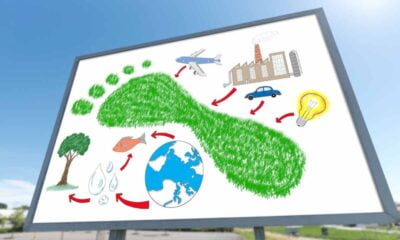Marketing
Four Web Design Trends That Do Not Go Out Of Fashion

Each year ushers in a new era of digital marketing trends, popular technologies, and new software. Just as you get used to them, they’re suddenly considered ‘uncool’ and ‘yesterday’ by the following year. Of course, it doesn’t matter too much if your business is using proven technology that’s not ultra-hip as most companies can not afford to be the ‘early adopters or even the ‘innovators’ (see the technology curve).
Even website software needs to be robust, so waiting a few weeks for the fix packs (updates) particularly those fixing security vulnerabilities is a given. Some sectors, e.g. banking and finance sectors, are unlikely to ever adopt the latest trends, but for everyone else, let’s look at what will trend for years to come.
Web Design Trends
When it comes to web design, however, what’s trending is in high demand. While 2019 was all about the strong user interface, bold colors and prioritizing user experience design, 2020 is set to be all about the massive font, vintage-inspired colors and typography, user-triggered animations, and design for sustainability.
Massive Font
Larger-than-life typography – we’re talking size 20 plus – will be the biggest thing (literally) in web design in 2020. Redscout and The New York Times Food Festival have already capitalized on this web trend, with a single line taking up nearly half of the viewport of their home page.
It makes sense that organizations want readers to heed their messages, so they seek fonts that really stand out. And within the ‘big fonts’ themselves, we will see several font types stand out from the crowd: humanizing serifs, round san serifs, swiss-style typography, rustic fonts, wide-open minimalism, classical influence, pixel art fonts, the seventies and eighties fonts, and kinetic fonts.
Vintage-Inspired Colours and Typography
Many think that vintage typography and colours, paired with modern aesthetics, will really make an impact in the coming year. Why so? Well, vintage is deemed reliable, something that never ages and that appeals to every demographic.
As we move beyond flat design, the time has come to bring back old design elements with a hint of nostalgia. As a result, the vintage or retro theme has exploded in recent years across fashion, photo, and video.
In particular, in the web design industry, the emergence of the vintage trend has kind of evolved from the “grunge theme”, which for so long dominated our computer screens.
According to Design Point, today, the vintage aesthetic is considered a little hipster, a little classy, and just overall cool. Most web designers are loving the vintage vibe. Collette Dinnigon is using a vintage theme on her latest website, check it out.
User-triggered animations
A growing trend in 2020 will be that of animations being triggered by some kind of input or action from site visitors instead of being animated 24/7. It will add a whole new dimension to typography, in that text will be interactive and will engage users much more. This trend will change how web designers and developers play with content and typography in the coming years.
Design for sustainability
This one really excites me. While many probably think sustainability and technology simply do not go hand in hand, the way you build and design a website can actually have a huge impact on the environment.
Sustainable UX is now a thing, with developers and consumers having realised that oversized and uncompressed images, auto-playing video and external scripts are putting too much pressure on server loads, making computers one of the most energy-consuming industries out there.
In 2020, developers and designers will consider energy use in web design, as more and more clients request low carbon websites from their developers and renewable energy sources from their hosting providers.
“Makers of the web also realize that they are holding the reins of a growing, energy-hungry industry.
Forecasters predict that information and communications technology may account for between eight and 21 per cent of energy consumption by 2030, so anyone who delivers web products has a responsibility to consider energy use in their design and implementation.”
Jerome Toole, senior developer at WordPress agency Wholegrain Digital.






